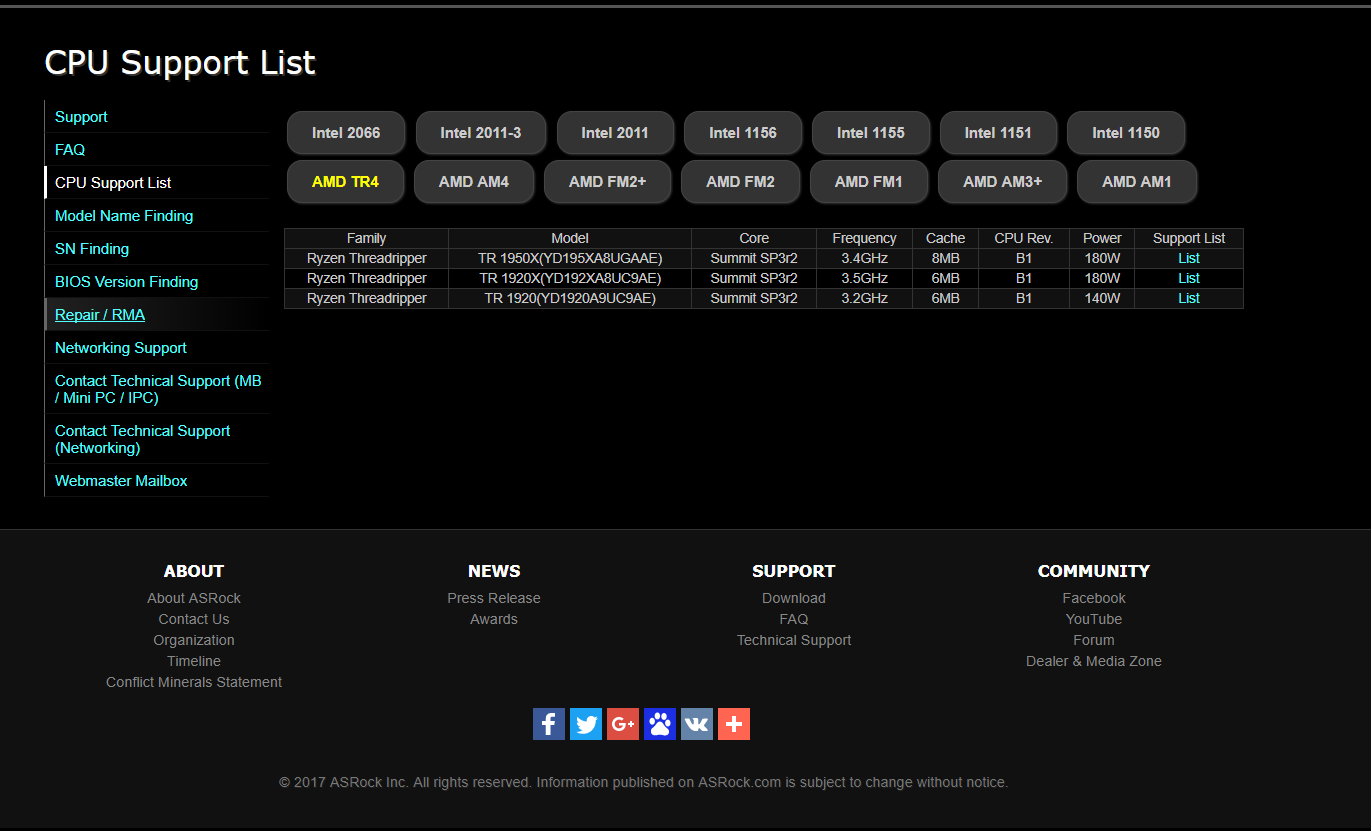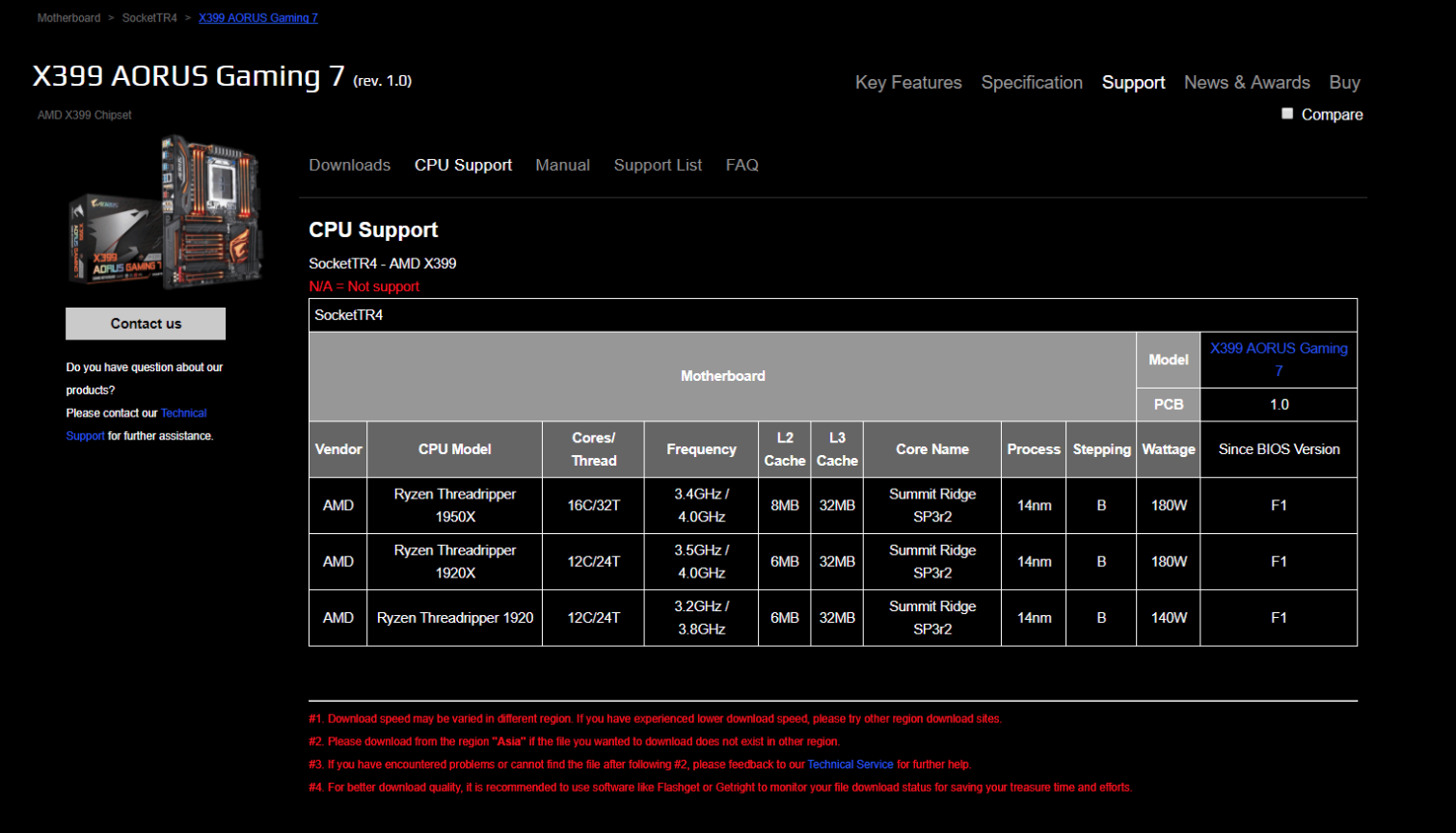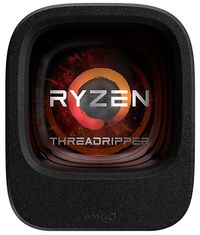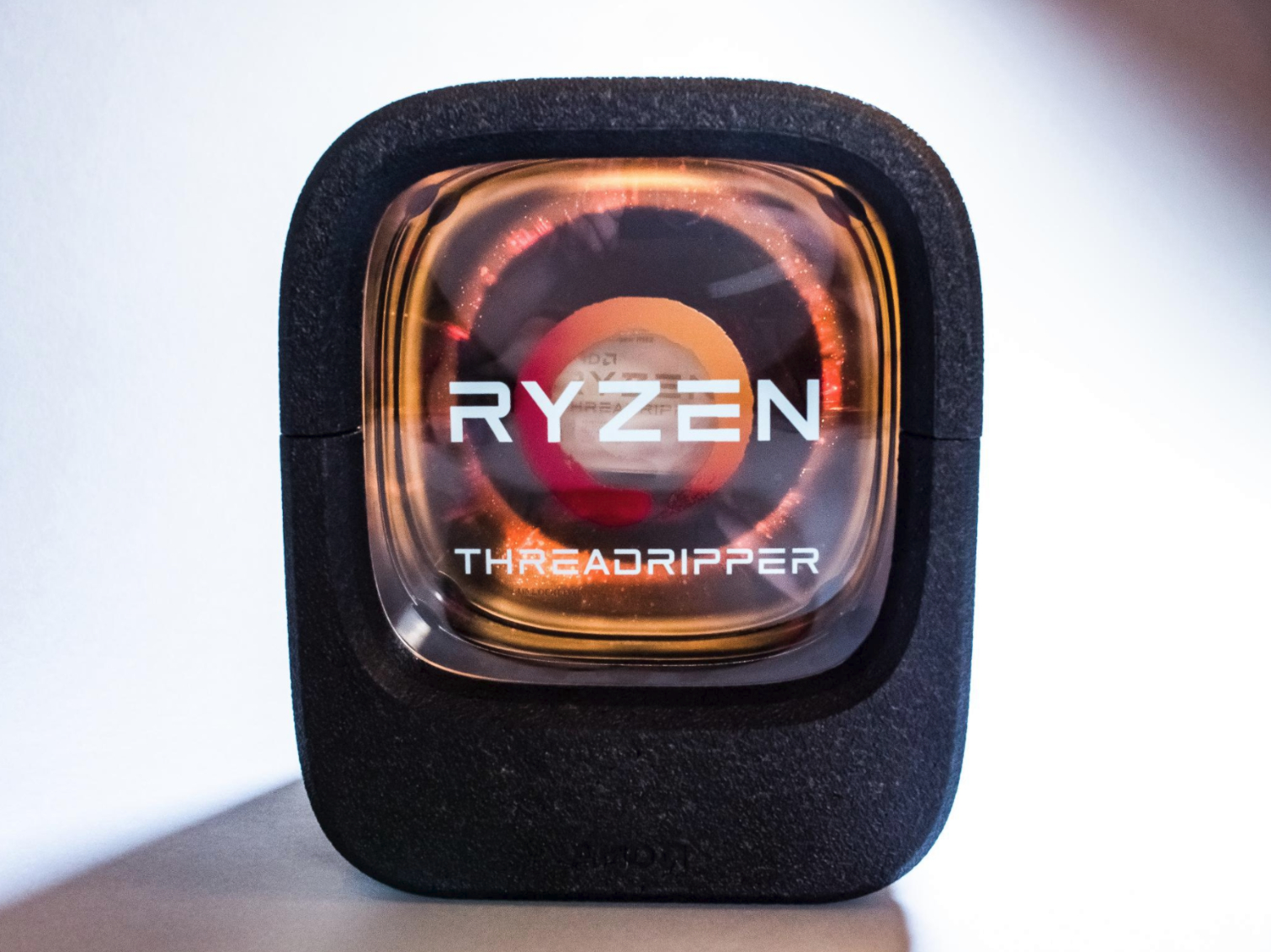Unannounced AMD Threadripper 1920 Listed, Other Non-X Models Likely To Follow
According to support pages at various motherboard vendors, AMD will likely launch a new 12C/24T Ryzen Threadripper 1920 model, and there are also signs that the company could expand the lineup further.
It appears that AMD is also considering two other new Threadripper SKUs, though the timeline for their release, or if they will come to market, remains unconfirmed. This isn't entirely surprising, as AMD has released "non-X" variants of every Ryzen processor to date, and AMD lists them in its master product list.
The value of AMD's unlocked multipliers on all SKUs means that you could be able to score great deals on cheaper non-X Threadripper variants. If the current Ryzen trend holds, the non-X Threadripper models will overclock very similarly to the high-end variants. AMD's non-X models tend to come with bundled coolers, whereas most "X" models do not. We'll see if that holds true with the possible Threadripper models, but if it does, it amplifies the value.
What Does All Of This Mean? (The TL;DR)
For now, you can pick up the Threadripper 1920X and 1950X on pre-order, but if you plan on overclocking, it might be best to be patient and wait to see if the non-X models come to market. After all, it might not make good business sense for AMD to bring those less-expensive, but nearly equivalent (if you overclock), models to market during the pre-order window.
First, let's cover the most likely new release, which is brought to you by information from several large motherboard vendors.
Ryzen Threadripper 1920
Back before AMD began shipping retail Ryzen silicon, the company positioned the "X" models as XFR-equipped, meaning that they have higher boost frequencies if your thermal solution is beefy enough. As silicon rolled out to reviewers, it became clear that all models carried at least some smidgen of XFR technology. AMD has since confirmed to us that standard non-X models can have a meager 50MHz XFR boost, while the most-robust X models offer up to 200MHz of XFR. The "X" variants, at least on the high-end eight-core models, also carries a higher 95W TDP rating compared to the 65W TDP found on the standard models.


Enter the Ryzen Threadripper 1920. This non-X model is brought to you courtesy of motherboard support pages at Asus, Gigabyte, and ASRock, though ASUS has since scrubbed mention of the processor. Considering the Threadripper 1920 is listed as officially supported, this model is very likely to come to market.
Get Tom's Hardware's best news and in-depth reviews, straight to your inbox.
| Row 0 - Cell 0 | Threadripper 1950X | Core i9-7900X | Threadripper 1920X | Threadripper 1920 | Core i7-7820X | Threadripper 1900X | Ryzen 7 1800X |
| Price | $999 | $999 | $799 | ? | $599 | $549 | $499 |
| Interface/Chiset | TR4 / X399 | LGA2066 / X299 | TR4 / X399 | TR4 / X399 | LGA2066 / X299 | TR4 / X399 | AM4 / X370 |
| Cores/Threads | 16/32 | 10/20 | 12/24 | 12 /24 | 8/16 | 8/16 | 8 / 16 |
| TDP | 180W | 140W | 180W | 140W | 140W | 180W | 95W |
| Base Frequency (GHz) | 3.4 | 3.3 | 3.5 | 3.2 | 3.6 | 3.8 | 3.6 |
| Boost Frequency (GHz) | 4.0 (4.2 XFR) | 4.3 / 4.5 (TB 3.0) | 4.0 (4.2 XFR) | 3.8 (? XFR) | 4.3 / 4.5 (TB 3.0) | 4.0 (4.2 XFR) | 4.0 (4.1 XFR) |
| L3 cache (L2+L3) | 40MB | 23.75MB | 38MB | 32MB | 19MB | 20MB | 20MB |
| Memory Support | DDR4-2667 | DDR4-2666 | DDR4-2667 | ? (Assumed Same) | DDR4-2666 | DDR4-2667 | DDR4-2667 |
| Memory Controller | Quad Channel | Quad Channel | Quad Channel | ? (Assumed Same) | Quad Channel | Quad Channel | Dual Channel |
| Unlocked Multiplier | Yes | Yes | Yes | ? Yes | Yes | Yes | Yes |
| PCIe Lanes | 64 | 44 | 64 | ? (Assumed Same) | 28 | 64 | 16 |
The support pages don't contain pricing or a few of the more basic details, but there is enough to determine positioning. Intel has a huge $400 price gap between the 10C/20T and 8C/16T models, which AMD already exploits with the Threadripper 1920X. We can assume the 1920 model should expand upon that advantage by offering more cores at a slightly higher price than the Core i9-7820X.
Base clocks weigh in at 3.2GHz, an expected reduction from the 3.5GHz of the 1920's X-equipped brother, and standard boost weighs in at 3.8GHz. We aren't sure of XFR frequencies, but considering AMD's past non-X lineup, we expect it to fall within the 50-100MHz band. The 140W TDP is also interesting, considering the 1920 has more cores than the 180W 8C/16T Threadripper 1900X. The lower base frequency likely explains that, though.
We expect this model to make its way to market after the 1900X, which arrives on August 31. The 1920 will also be attractive to workstation users, who tend to prize stable non-overclocked configurations with spacious PCIe and DRAM accommodations. The 1920 certainly has the potential to be disruptive to Intel's workstation lineup.
So What About Those Other Models?
The first signs of two other new Threadripper processors emerged through AMD (PDF). The company posts a Product Master list on its site, and through a bit of clever decoding prior to the official Threadripper launch, the sharp-eyed folks at Planet3DNow were able to determine that several unannounced Threadripper models were listed in AMD's documents. Here's their explanation of the OPN designations:
Small OPN Enlightenment: YD = Ryzen 1900 = no A9 = Thermal Power DesignU = Socket ID (SP3r2) 8 = number of cores in hex S = cache AE = Revision where AE = ZP-B1 and AF = ZP-B2
We came across this topic last week, but considering that sometimes vendors will list 'proposed' models that never make it to market, we passed on covering it. However, the document correctly foretold the then-unannounced 1900X, so it seems likely the two other unannounced models will also make it to retail.
So, what do the numbers tell us? AMD might release a Threadripper 1900 with 8 cores and 16 threads, along with a 1950 model with 16 cores and 32 threads. Both of these model’s slot logically into the stack and will feature lower XFR frequencies than their "X" counterparts. They'll also be less expensive. We don't know anything else, or if these two models have found their way to the cutting room floor. But given AMD's established history with the Ryzen models, we expect they will come to market.
Interestingly, the EPYC processors are listed in the document with the ZP-B2 Zeppelin die, whereas the Ryzen models use the ZP-B1 die. This could mean either that the EPYC processors use a newer stepping, or perhaps a different die.


Paul Alcorn is the Editor-in-Chief for Tom's Hardware US. He also writes news and reviews on CPUs, storage, and enterprise hardware.
-
InvalidError I'd really like to know if there is a significant die area difference between B1 and B2 specifically for all those extra PCIe lanes and infinity fabric between dies/sockets - are all of these in all current Zeppelin dies but unused or only in TR/EPYC?Reply -
falchard That is just a fantastic looking retail packaging. I don't think we are used to it in PC hardware. Probably a good part of the cost.Reply -
nitrium Reply
That's very obviously NOT the Intel part this is supposed to compete with and gaming is NOT the market it's aimed at either. Do you have a post quota you're trying to achieve?20024618 said:Core i7 will be fastest in gaming.
-
TechyInAZ Sigh... why is everything about gaming. Threadripper is aimed at prosumers first and consumers next.Reply -
tamalero the 10/20 winning in gaming comment is funny. other reviewers already say that anything past 8 cores, overheat and throttle severely on the Intel sides.Reply
And they suffer vastly more of issues related to the "core glueing" of their mesh topology (including being slower than corei7700k on gaming and even slower in core vs core performance). -
mapesdhs Tamalero,Reply
a) At higher resolutions, this is far less relevant, GPU bottleneck prevails.
b) If one is doing other tasks aswell, such as streaming (an increasingly popular thing), 8+ cores helps a lot. Checkout GN's review of the 1700 vs. 7700K. -
warmon6 Reply20024612 said:10/20 Intel will still be the fastest in the gaming.
They can only be the fastest once they get some glasses with that kind of vision! Oh wait. :rofl:


